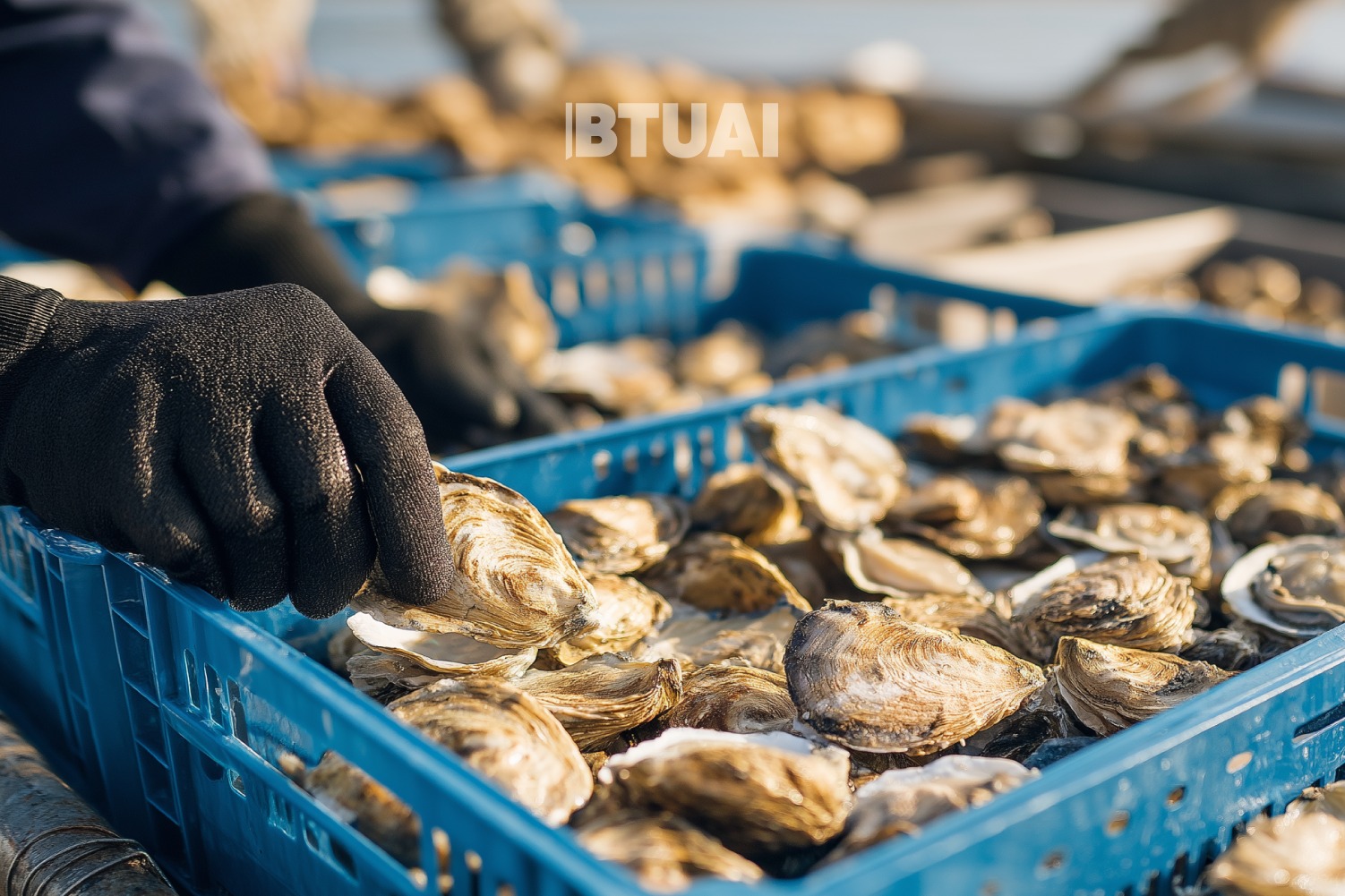The Economics of Mollusks in the South Caucasus: From the Black Sea to Regional Dining Tables
In recent years, restaurants in Tbilisi and Batumi have begun to feature dishes that, not long ago, could only

In recent years, restaurants in Tbilisi and Batumi have begun to feature dishes that, not long ago, could only be tasted abroad. Oysters, mussels, squid – these are slowly finding a place in Georgian cuisine and catering to the growing demands of the tourism industry. Yet the numbers show that Georgia remains a very small player in the global mollusk market. In 2024, the country imported just 133 tons of mollusks worth $868,000 (ITC). This volume may not even cover the monthly needs of a large European restaurant chain, but it is still significant for understanding the dynamics of Georgia’s niche market.
The import structure reveals a dual trend. Imports from the Netherlands nearly doubled last year, making it one of Georgia’s key partners. Dutch mollusks, valued for their affordable pricing and standardized quality, are positioned in the mass-consumption segment. China supplies the largest quantities at low prices, serving the broadest consumer base. France, meanwhile, provides oysters and other premium products at the high end of the market – where one ton costs more than $32,000 – destined for fine dining. This sharp price differentiation shows that Georgia’s market is evolving into “two parallel worlds”: an affordable, mass-consumption segment and a small but growing gourmet market driven by tourism and upscale restaurants.
Globally, the mollusk market is worth over $17 billion and continues to grow. Its main hub is the Asia-Pacific region, with China, Vietnam, and Indonesia dominating production. Europe has taken a different path: here, bivalve aquaculture (mussels, oysters) provides not only food but also an environmental service, as each mussel filters tens of liters of water per day, helping to balance marine ecosystems. Yet the picture is not entirely optimistic. Climate change and rising ocean acidity pose real threats to mollusk reproduction. In parts of Europe, oyster farms have collapsed due to disease and toxic algae blooms, and recovery has proven difficult. For Georgia, these risks are highly relevant: the Black Sea cannot be considered immune.
The history of the Black Sea also includes one of its most interesting ecological-economic stories: the spread of Rapana venosa, an invasive mollusk species. First introduced by accident in the mid-20th century, it threatened local biodiversity. Today, however, rapana is part of the regional economy: Georgia, Turkey, Bulgaria, and Ukraine export hundreds of tons annually, generating millions in revenue. International organizations such as the FAO are monitoring the process and encouraging joint management strategies, since overfishing continues to pose risks. For Georgia, rapana could become a resource that strengthens exports, not just a reminder of dependency on imports.
Still, infrastructure challenges remain. Weak development of the cold chain makes it difficult to handle live or semi-processed imports. Sanitary regulations aligned with international standards increase costs and squeeze out small importers. Consumer awareness is also limited: many locals still perceive mollusks as “strange or foreign food,” slowing down their spread.
Alongside imports, there are now modest levels of local production in Georgia. Based on Black Sea aquaculture initiatives, an estimated 40–50 tons of mussels and 10–15 tons of oysters are produced annually. This amounts to less than one-third of annual imports and represents a small share of the overall market. Still, it signals that the use of Black Sea resources could become not just a culinary attraction but a pathway for economic development.
Opportunities are clear. Tourism, especially in Batumi and other large cities, is creating growing demand for seafood. Restaurants are already experimenting with more diverse menus, which will further increase demand for high-quality mollusks. Expanding aquaculture in the Black Sea – whether through managing rapana harvests or cultivating bivalves – would allow Georgia to develop its own resources for both domestic consumption and export.
Regional comparisons put Georgia’s position into sharper perspective. Armenia, a landlocked country, relies almost entirely on imports. In 2024, its imports of seafood products (including mollusks) totaled about $20.7 million, though overall consumption remains limited. Azerbaijan, by contrast, shows larger volumes: in 2024, imports of the same category reached $49.3 million. The Caspian Sea offers limited mollusk resources, so imports come primarily from Turkey and Asia. Baku’s restaurants, driven by a booming tourism sector, are already shaping a broader consumer base. Against this background, Georgia stands in the middle: unlike Armenia, it has direct access to the Black Sea, which provides potential for resource development, but it still lags behind Azerbaijan in terms of import scale and market size.
At first glance, Georgia’s mollusk trade may seem insignificant – 133 tons, $868,000, and a handful of key suppliers. But when we look deeper, these numbers tell a much larger story: how global markets intersect with local cuisine, how an invasive species can become an economic resource, and how a small country seeks its place in a global industry worth $17 billion. This transformation makes the story of mollusks in Georgia far more fascinating than it may appear at first sight.
(Source: ITC, FAO, Mordor Intelligence, TradingEconomics)




